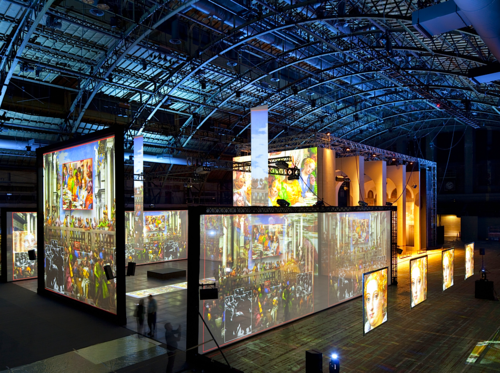
What is Culture Kettle? You can read more about it in my own blog post last week, although as you’ll see the concept is still coalescing. In a nutshell, it’s a new organization dedicated to R&D in the cultural sector. The “R” will be exploratory research studies that ask new questions about how arts and culture experiences work — and more importantly, could work — and for whom. The “D” will be the development and testing of new approaches, sometimes radical ones, with real audiences on an experimental basis. Those audiences will be conscious participants in the experiment, partners in the exploration and evaluation of new possibilities. Not all of those possibilities will work, of course; R&D runs on failure as well as on success. The idea is to close the circuit between research and innovation so we create an engine of new knowledge about people want to engage with cultural content.
By “culture” I mean more than museums. Later this month we’ll announce Culture Kettle’s first Innovator in Residence, someone who’s a visionary voice in the classical music world. We’ll also work with innovators in the museum field, of course, and have already benefitted from the wisdom of several great thinkers and do-ers. As some of them have pointed out, there’s already a good deal of innovation going on around the museum community, some of it in well-established institutions and some in “indie” venues and ventures led (mostly) by a younger generation of museum practitioners. One function of Culture Kettle could be to help document and evaluate those experiments — using new methods and asking new questions that fit the spirit and intentions of those experiments better than traditional evaluation approaches do — then aggregate and extrapolate from those findings and share the evolving picture with the field.
Skip over related stories to continue reading articleBut there are also questions I’d like to investigate that aren’t currently being tackled by others. So we’ll develop some projects from scratch within the Kettle. That doesn’t preclude us working with creative museum people and risk-tolerant museums, although in some cases we’ll want to install an exhibit in a rented space rather than an existing museum — a storefront, an empty factory, a black-box theater. Working on neutral ground may have advantages in terms of both the preconceptions that audiences bring to the experience and the freedom that museum professionals bring to dreaming it up.

That’s just one of many questions I’d like to stir around in the Kettle. I’d love to work in the science and history domains as well as art (although art may play a role in those projects, too). I’d love to tackle issues of participation, spirituality, politics, anger, humor, sex, and irony (something rare in museum exhibitions but essential to other forms in our culture). I’d like to play with exhibits that fall under no museum’s mission purview, because there’s more to life than what’s covered by the traditional museum categories of art, history, science, natural history, living collections, and so on, and exhibits could be a powerful expressive medium in other realms. (Experiment: open your favorite general-interest magazine, say, the New Yorker, and imagine each article as an exhibit.)
If any of this strikes you as exciting, please consider this a call for cronies and collaborators. I’d love to hear your ideas and suggestions: post a comment below or drop me a line.









Comments